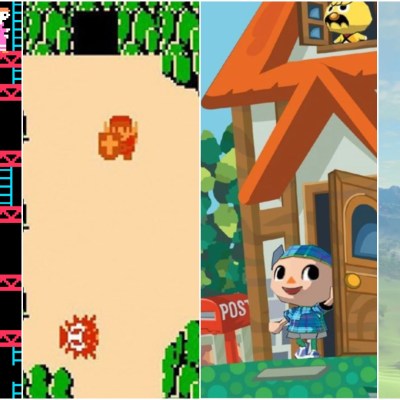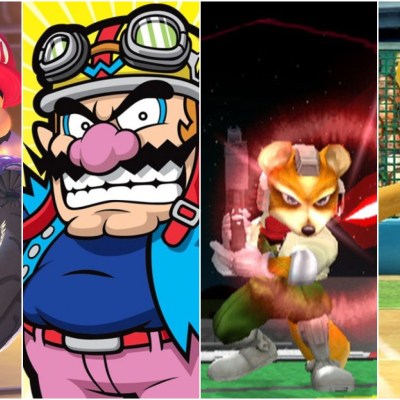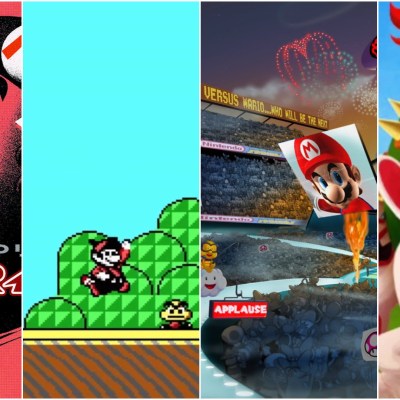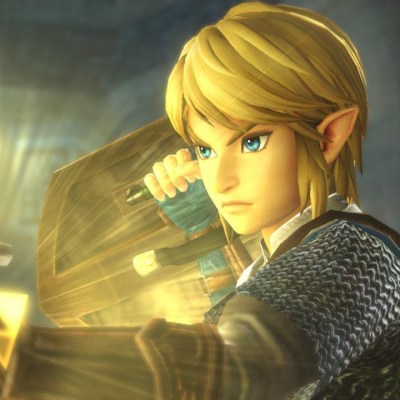The Nintendo Fan Games That Tried to Revitalize Pokémon, Metroid, and Super Smash Bros.
For a generation of fan creators, the Nintendo game of their dreams was worth the nightmare that followed.

In 2016, Milton Guasti’s Metroid 2 remake (AM2R) was released online after a decade of work. One day later, Nintendo sent DMCA takedown requests to the websites that hosted it. Many fans were shocked by the decision. Guasti seems more surprised by the efficiency of it.
“Throughout the years I started seeing that [a takedown] could be possible,” Guasti recalls. “What I was not expecting was that it happened so fast.”
New fan-made gaming projects are developed and distributed all the time, and often embraced by studios, but as those in the creative community know, Nintendo has historically been adamant about protecting its properties and taking down fan games. From novelty game mods to NSFW art of Bowser, there’s no guarantee that fan creations based on Nintendo games will survive online for long.
So what makes someone spend years on a game that may only be widely available for one day? For Guasti, it was the chance to learn programming within a fascinating framework.
“I decided I wanted to practice a little bit of programming, so I downloaded GameMaker and did a couple of mini-games here and there just to learn a little bit of how game logic and design are done,” Guasti says. “Since most of the effort in designing something is getting the first couple of decisions, remaking something that’s already done seemed like a good idea to save time. I had recently played Metroid: Zero Mission on the Game Boy Advance [a remake of 1986’s Metroid], and since there was no similar treatment for Metroid 2, I said, ‘Well, this is a black and white game. Whatever I do with ripped sprites might be better than this. So I guess I can make a Metroid game.'”
For Guasti, the appeal of making his own Metroid game was more about the design of the franchise than his overwhelming love for the series. He described himself as more a Metroid “enthusiast” than a “hardcore fan” when he started working on the game. For others looking to learn how to develop and design games, the choice of which game to use as a starting point comes down to franchises they’ve always loved.
“It was my childhood dream to make my own Pokémon game,” says fan developer Involuntary Twitch. “Thus began my nine-year journey with fan game development as a hobby.”
That hobby became Pokémon Uranium, a Pokémon fan game the size of a major franchise installment. Involuntary Twitch wanted it to feature all of the things that she loved about Pokémon games: “pixel art, exploring, discovering new creatures, and uncovering mysteries.” For the many ways that Uranium was designed to be an homage to Pokémon, there was at least one element Twitch hoped to improve.
“I have been my entire life saying that Pokémon can and probably should do a little bit better with the stories,” Involuntary Twitch says. “I don’t think Pokémon needs to tell this grand, epic story with all these plot twists and betrayals and darker themes…but I think that what makes a good story is just the feeling that your actions actually matter, that the things you do are instrumental to the outcome of the plot.”
As the tale of a young trainer whose mother was lost in a nuclear accident roughly 10 years before the mysterious appearance of radiated Pokémon coinciding with the construction of a new power plant, Uranium‘s plot is darker, more complicated, and perhaps a bit more mature than what many of the games in the Pokémon franchise aim for. It’s also a big part of the reason why Uranium was widely hailed as a breath of fresh air for a franchise that largely sticks to the same formula put in place in the ’90s.
Yet, the story of Uranium that many more people are familiar with is what happened after the game was released. Much like AM2R, Uranium was hit by DMCA takedown requests issued by Nintendo shortly after the project’s 2016 release. After over nine years of work, Uranium‘s widespread availability could be measured in hours. Once again, the move did not come as a complete surprise.
“I think our mentality was that we’d already had multiple playable releases out of the game, and so whatever its ultimate fate may be, we owed it to ourselves,” says Involuntary Twitch of the decision to continue working on the project despite the likelihood that it would eventually be taken down. “This is the single biggest project that any of us had ever done in our entire lives…So, we owed it to ourselves and we owed it to the people who were excited to see this game fully realized to see it all the way through the end”
So why didn’t Involuntary Twitch and her creative partner JV just make a copyright-free clone of a Pokémon game?
“I did consider it, but I mean, at that point, we were in too deep,” Twitch says. “Literally every single part of the game would need to be thrown out and reconstituted to the point where it would be unrecognizable. And in exchange for doing that, we would get way less exposure, and we would basically just be filing the serial numbers off something that’s meant to be our love letter to a franchise…I feel like doing that would’ve drained what drove us to make this game in the first place, which was our love for Pokémon.”
That certainly seems to be the dilemma. Many Nintendo fan creators are often inspired by their love for Nintendo games, but there are times when Nintendo can be hard to love. The company will go years without even acknowledging beloved franchises but it’ll immediately litigate when fans pursue the projects and ideas Nintendo won’t.
Those bespoke projects are often designed to appeal to a section of the fanbase Nintendo has sometimes ignored. Uranium featured a more mature story not commonly seen in Pokémon games. AM2R focused on one of Nintendo’s most complex (and often ignored) franchises. And in terms of notorious Nintendo fan projects designed to address something that was missing, few titles are as compelling as Project M: a Super Smash Bros. Brawl mod designed not to reinvent the wheel but simply make that game feel closer to its predecessor.
“Brawl took away almost everything that many people enjoyed about Melee from a gameplay design perspective,” says former Project M webmaster Taylor “Warchamp7” Giampaolo. “The floatier gravity, the slower gameplay, the removal of many character control nuances like dash dancing and wave dashes, and random factors like tripping that took control away from the player all contributed to a game we found less enjoyable. Project M‘s main goal was to bring back the elements of Melee that we all enjoyed like the faster pacing and balance of risk/reward.”
On the surface, a mod like Project M probably comes across as the work of a fanbase that felt Nintendo had gotten it wrong. Yet, that’s not necessarily the case. If anything, the game is more often talked about as a kind of “What if?” scenario designed to explore what may have happened if the competitive community that embraced Melee had become the primary audience for future installments.
“Project M is definitely our alternate take on what we’d like the series to look like,” Giampaolo says. “Melee‘s competitive nature is sometimes considered a happy accident, and I’d say Project M is a deliberate execution of those competitive aspects.”
Melee‘s expansive multiplayer modes make it clear the game was intended to be played competitively between friends, but what many believe Nintendo did not necessarily anticipate was how the game would be embraced by more “hardcore” fighting game fans. What was essentially conceived as a Nintendo mascot brawler became a mainstay in the competitive fighting game community, and some of the things that made the game so different are also what made it popular among the genre’s most dedicated fans.
“Melee‘s mechanics offered an extreme freedom of movement that provides limitless options in various situations,” says Smash Bros. modder Dan Salvato. “I think most notably, simply moving your character around on the screen is extremely fun in itself. Most fighting games are balanced around what you can’t do in any given situation, but Melee kind of rips out the brakes and hands the keys to the player. You might get a lot of Melee die-hards giving you a list of reasons that Melee is ‘better,’ but I think that it just provides a different experience that captures a different audience of players.”
As a look into a kind of alternate reality for the Smash Bros. franchise, it’s easy to again wonder why the Project M team simply didn’t create their own Smash Bros.-like game based on Melee‘s mechanics. Much like with Pokémon Uranium, the decision to stick to the Smash Bros. name and the many copyright conflicts that come with it can be attributed to a combination of love and logistics.
“Everyone on the Project M team was incredibly talented but a lot of members had skill sets that were specifically tailored for modding Brawl,” Giampaolo says. “Some of the people that did programming on the team didn’t know any normal programming languages; they only knew assembly and had learned it through modding. Some of the animators didn’t have any experience with industry animation tools; they only knew how to use the community-created ones designed for Brawl‘s file formats. I consider their work even more impressive because of that but it means they wouldn’t have had an easy transition to making a ‘real’ game at the time.”
The Project M team was aware of the risks associated with the game they were making, and, as such, decided to institute a series of rules that they hoped would help protect the game against an immediate takedown. For instance, they encouraged people to play a “hackless” version of the mod that still required them to purchase Brawl, and they didn’t add new characters to the mod that weren’t already present in Brawl in some way.
In a way, the guidelines worked. Project M wasn’t hit with an immediate takedown request, but the constant threat of future legal actions and the desire to start on an original project accelerated the end of its development. But before that happened, Project M was embraced by the Smash Bros. competitive community who began using it and other modded versions of Smash Bros. as the feature attraction in many tournaments.
It doesn’t seem many of those fans expected Nintendo to embrace Project M or officially support any Smash Bros. mod. However, many of them wanted Nintendo to at least recognize their passion for the series’ competitive elements and how many felt Melee, in particular, best represented those qualities. There’s a degree to which the competitive Smash Bros. community lived in that same “under the radar” territory that Project M tried to exist in, and there’s a degree to which the competitive Smash community just wanted to be seen as fans who built a tournament scene based on love and shared passions. When Nintendo finally noticed them, the real trouble started.
“Over the years, the most community backlash hasn’t come from Nintendo not caring, but it has come from Nintendo interfering,” Salvato explains. “I think a decade ago, the Smash community felt more desperate for Nintendo’s acknowledgment…but once Nintendo stepped in, though, all of their regulations followed, and the Smash community started to question whether they actually wanted it.”
In 2020, Nintendo sent a cease and desist letter to a beloved Smash Bros. tournament that planned to use a Smash Bros. Melee emulator to host a digital event during the Covid-19 pandemic. The letter even targeted the event itself, which meant the hosts couldn’t simply feature the latest Smash Bros. game instead. After years of being ignored, the Smash Bros. competitive community was dealing with the fallout of being seen. While Nintendo has helped event organizers in the past, it was that lingering threat of things quickly going the other way that so often made the relationship uncomfortable and, at times, impossible.
Guasti can tell you more about Nintendo’s history of acknowledging the work of fans in their own strange way. A year after shutting down AM2R, Nintendo revealed and released an official Metroid 2 remake for the 3DS called Metroid: Samus Returns. Given that the franchise had been dormant for some time and that an unofficial remake of that same game had just been taken down a year before, the reveal of Samus Returns came as a shock to many, including Guasti.
“It was quite a surprise. Nobody saw it coming,” Guasti recalls. “Once I finished seeing the trailer, it was like, ‘Hmm, so that’s how the Metroid fights look with a budget.'”
Samus Returns and AM2R are actually quite different in terms of their visuals and mechanics, but in a way, the differences made the speed at which the latter was taken down before the former was released that much more surprising.
“If you think about it, it’s super fascinating,” Guasti says. “These two points of view of the same story have been developed in parallel. At least one of the parties didn’t know that the other existed. Even if there are a couple of elements in common, the way that they conveyed the game feel and the whole environmental design, how Samus moves around and all of the elements in the design are completely different.”
Maybe there’s an alternate timeline where the differences between the two games meant both were allowed to exist, but Guasti doesn’t seem to dwell much on that. As strange as it may seem for someone who spent so many years of their lives on a project they couldn’t profit from, Guasti seems satisfied with how things worked out.
“I can’t be mad,” Guasti says. “I reached the audience that I wanted to reach. I learned everything that I wanted to learn from that…I’m really happy how that stage in my life turned out.”
Considering that Guasti’s work on AM2R helped him find a job in the video game industry where he later worked on the Metroidvania title Ori and the Will of the Wisps, you may think that the fate of AM2R is only easy to accept given that it led to a career and all of the benefits that come with that. Yet, there are many creators who share the belief that the real value of their work was the chance to share something with other fans like them.
In fact, some wouldn’t even mind if Nintendo essentially released the games they worked on without even giving them direct credit, much less a check.
“I would be ecstatic,” Giampaolo says of the possibility of Nintendo releasing its own Project M without acknowledging the mod’s creators. “We created Project M because it was the game that we wanted to play and it is, to date, my favorite entry in the genre. I’d love nothing more than for more players to get to enjoy that.”
Of course, Project M is a mod to an existing Nintendo game, and its creators were always aware of the fine line they were walking when working on it. They also got to end it on something closer to their own terms, and the mod is still massively popular among its intended fanbase to this day. But what about Involuntary Twitch whose project was hit by one of the swiftest and most complete takedowns in fan game history? How would she feel if the next Pokémon game was essentially a copy of Uranium but she received no credit?
“I’d be thrilled,” Twitch says. “I wanted to play one of my own games on a Nintendo handheld my entire life. And even if they didn’t put my name in the credits, I would still know that I was there, that I had inspired some type of its DNA. That, to me, would be enough. I mean, I am not here to chase clout. I don’t make fan games for attention. I make it because I like to do it and it’s a fun hobby for me.”
While there is something exceptional about those who create to fulfill a vision and share it with the world, this mentality seems to be the lifeblood of the fan game community.
“The modding mentality is that you have a community that loves a game so much that they want to extend its lifespan and help each other enjoy the game even more,” Salvato says. “In my experience, mods are always full of a lot more love for Nintendo than they are of disappointment. Modders are proud and passionate, and they love what they do.”
You could argue this love is rarely reciprocated by Nintendo, but some creators suggest we may need to change our perception of success by recognizing that completing and sharing these projects can be more important than profits and fame.
“I hope that it brought them some joy because, to me, creating stuff is something that defines who I am,” Involuntary Twitch says. “I hope that it can help other people to find out who they are and develop their skills and find a place where they belong.”
Why does someone spend years of their lives on a project that can’t make money, will probably be shut down, and will never be embraced by the company that inspired them? The answers vary but seem to often come down to a surprisingly simple philosophy. You can spend years waiting for Nintendo to do make something, or you can spend that time doing it yourself and letting the memories, the love, and the quality of the games justify it all.




